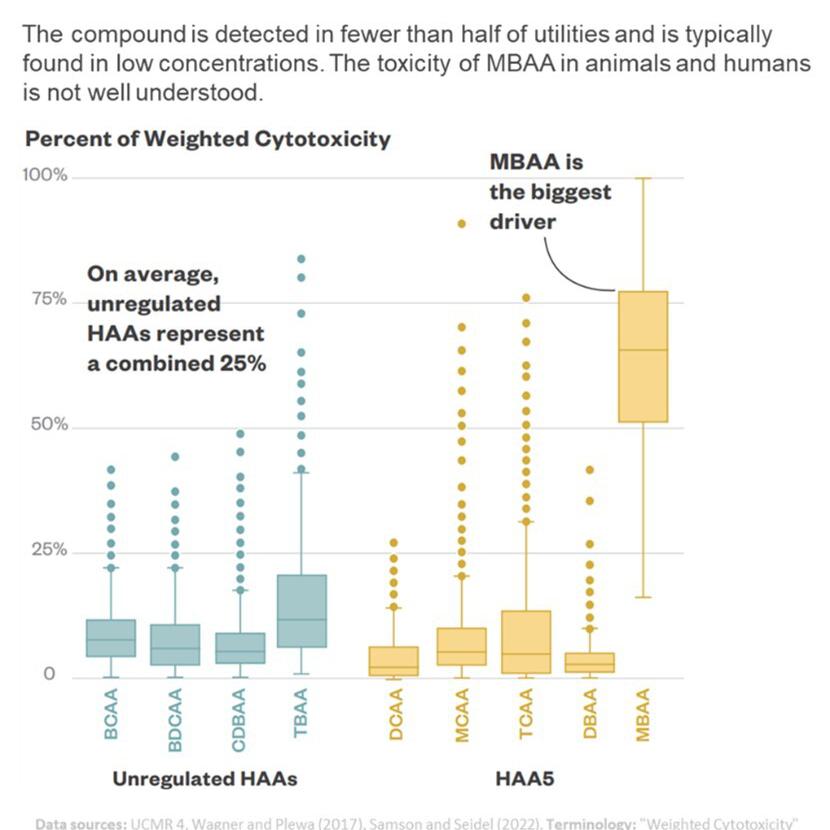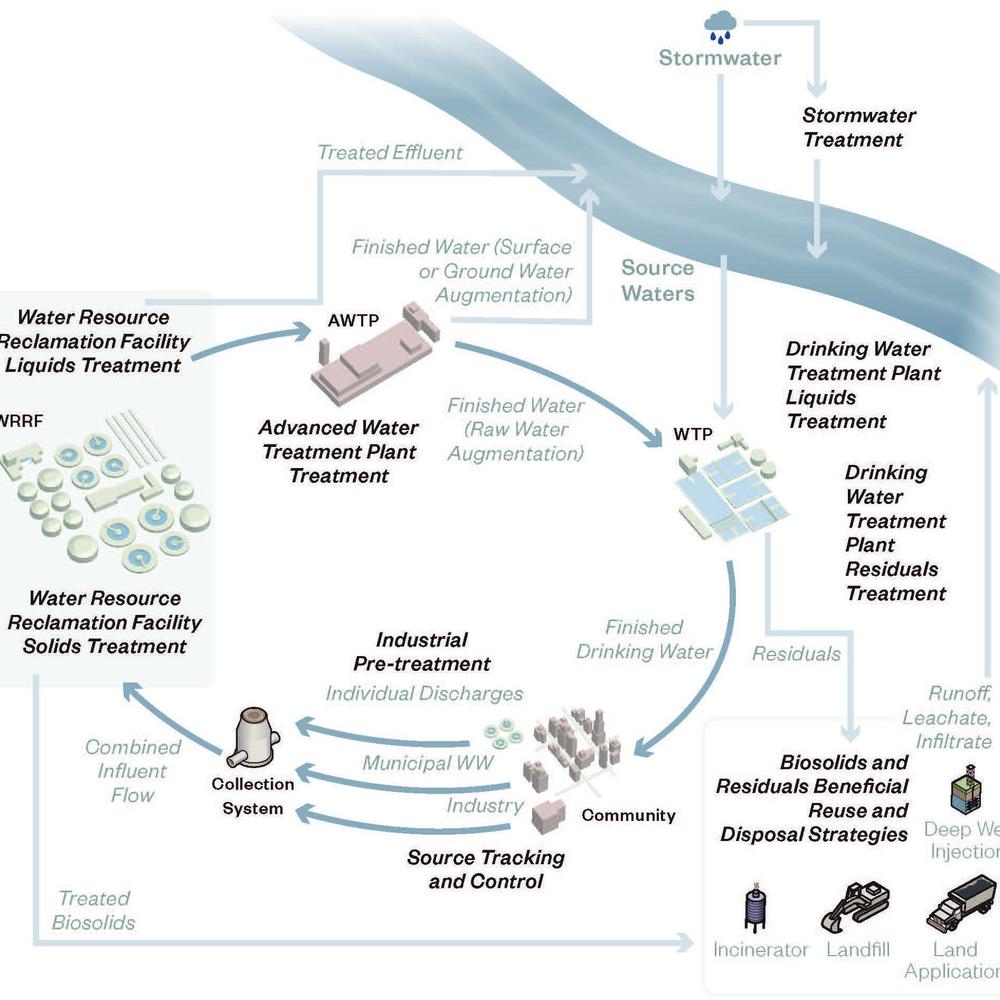PAA as a Pretreatment Alternative to Free Chlorine in a DBP Sensitive Application: Pilot Results
Last Modified Jul 05, 2022
The McKeesport WTP is a 10 MGD conventional WTP, owned by the Municipal Authority of Westmoreland County (MAWC) and located in McKeesport, PA. MAWC has initiated several treatment measures to decrease levels of DBPs, including implementation of tank aeration, but has still realized an upward trend in DBP concentrations. This trend has been attributed to changing source water quality, namely increased TOC concentrations and higher temperatures, two issues common with many municipalities. To combat this, MAWC is evaluating the use of peracetic acid (PAA) as a pre-oxidant in place of chlorine. PAA is a strong oxidant that exists in equilibrium with acetic acid, hydrogen peroxide, and water, and has been granted NSF 60 approval for water treatment. PAA has a higher oxidative potential than chlorine and does not form significant amounts of carcinogenic DBPs, primarily producing carboxylic acids which are largely benign. Unlike chlorine, PAA does not result in a consistent residual and therefore is only suitable for pre-oxidation, not as a final disinfectant.
A series of jar tests were performed to evaluate the use of PAA vs pre-chlorine and sodium permanganate (NaMnO4). Use of PAA and NaMnO4 resulted in improved treatment performance when compared to pre-chlorine. Each pre-oxidant showed comparable reductions in turbidity, while PAA and NaMnO4 resulted in increased removal of TOC and increased UV-254 absorbance. Use of PAA and NaMnO4 resulted in significant decreases in both TTHMs and HAA5s in the simulated distribution system test when compared to pre-chlorine. Data from bench scale testing was presented at WQTC 2018.
A protocol for pilot testing was developed in coordination with the Pennsylvania Department of Environmental Protection (PADEP) and testing will be conducted from May through October 2019. The pilot will include plant match unit processes that mimic treatment conditions at the McKeesport WTP. Monitored parameters will evaluate removal of NOM (UV-254 & TOC), common targets of oxidation (Mn & Fe), plant performance (turbidity), disinfectant capabilities (total & fecal coliform), effects on corrosion control (pH, alkalinity, chloride, sulfate, ORP, TDS, Ca, & DO), and DBP formation (bromide, free chlorine, speciated TTHM, & HAA5). If accepted, the results of this pilot testing would be presented for the first time at WQTC 2019.
The PADEP has indicated willingness to approve full scale implementation of PAA as a pre-oxidant at the McKeesport WTP pending pilot testing results, therefore this effort may result in one of the first applications of PAA at a WTP in the country. With mounting concern over DBPs, PAA represents one potential strategy to reduce the water industry’s reliance on chlorine. Use of alternative oxidants will minimize the unintended formation of harmful chemical compounds during the treatment process and result in improvements to both human and environmental health.











